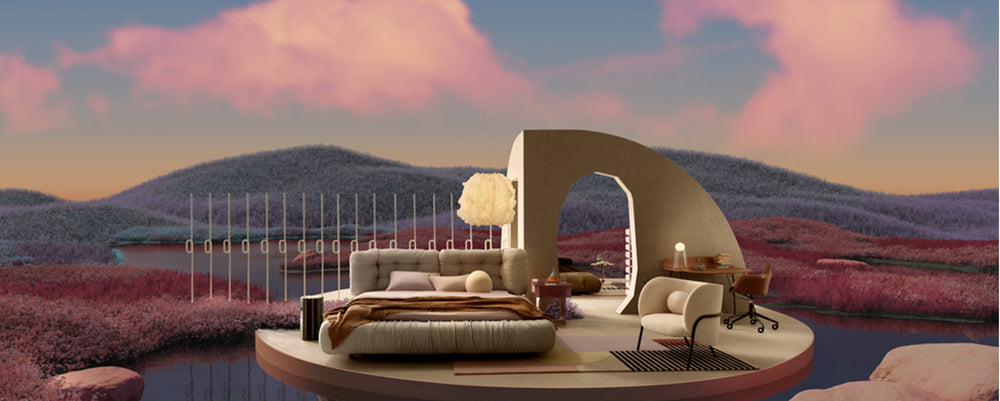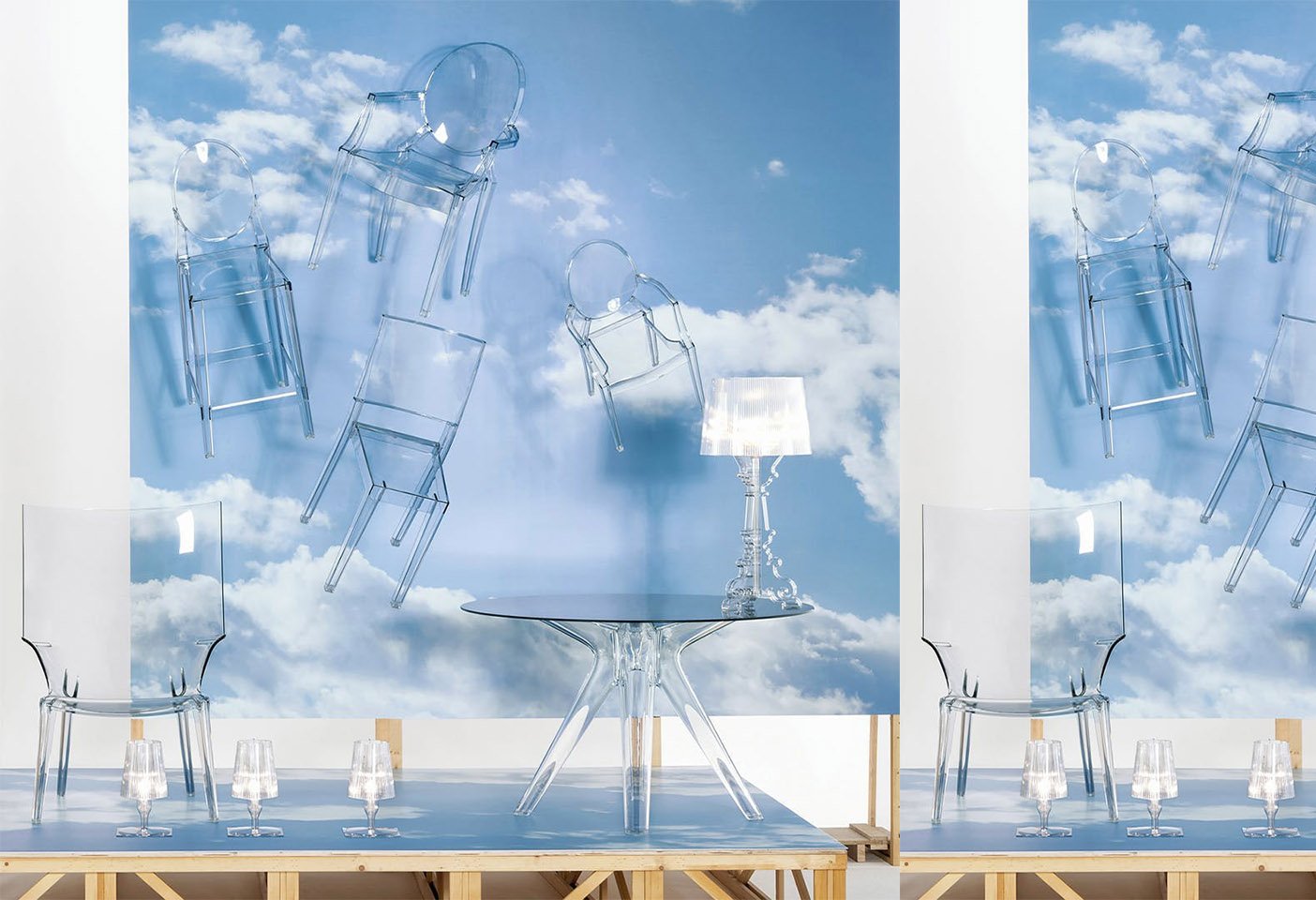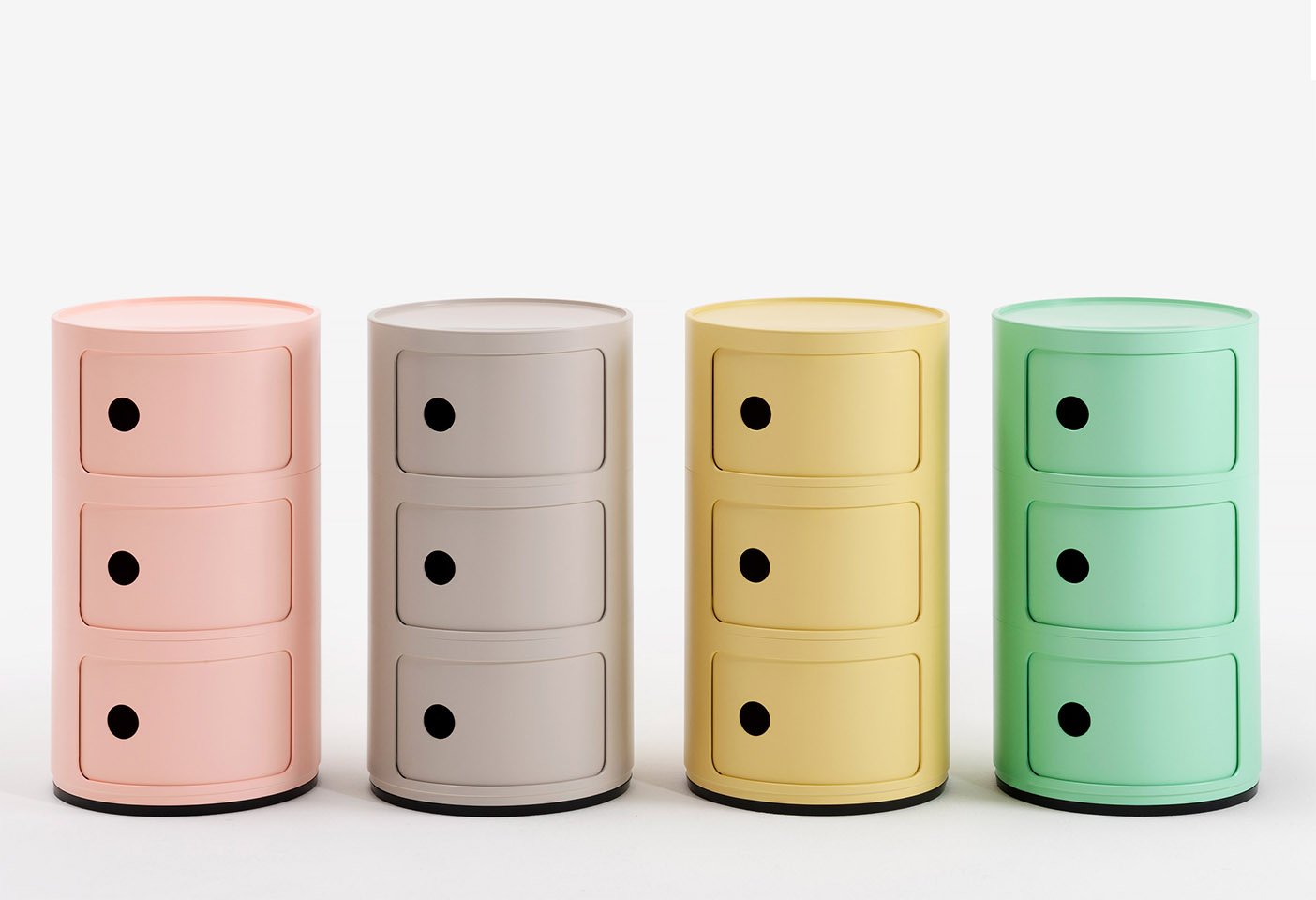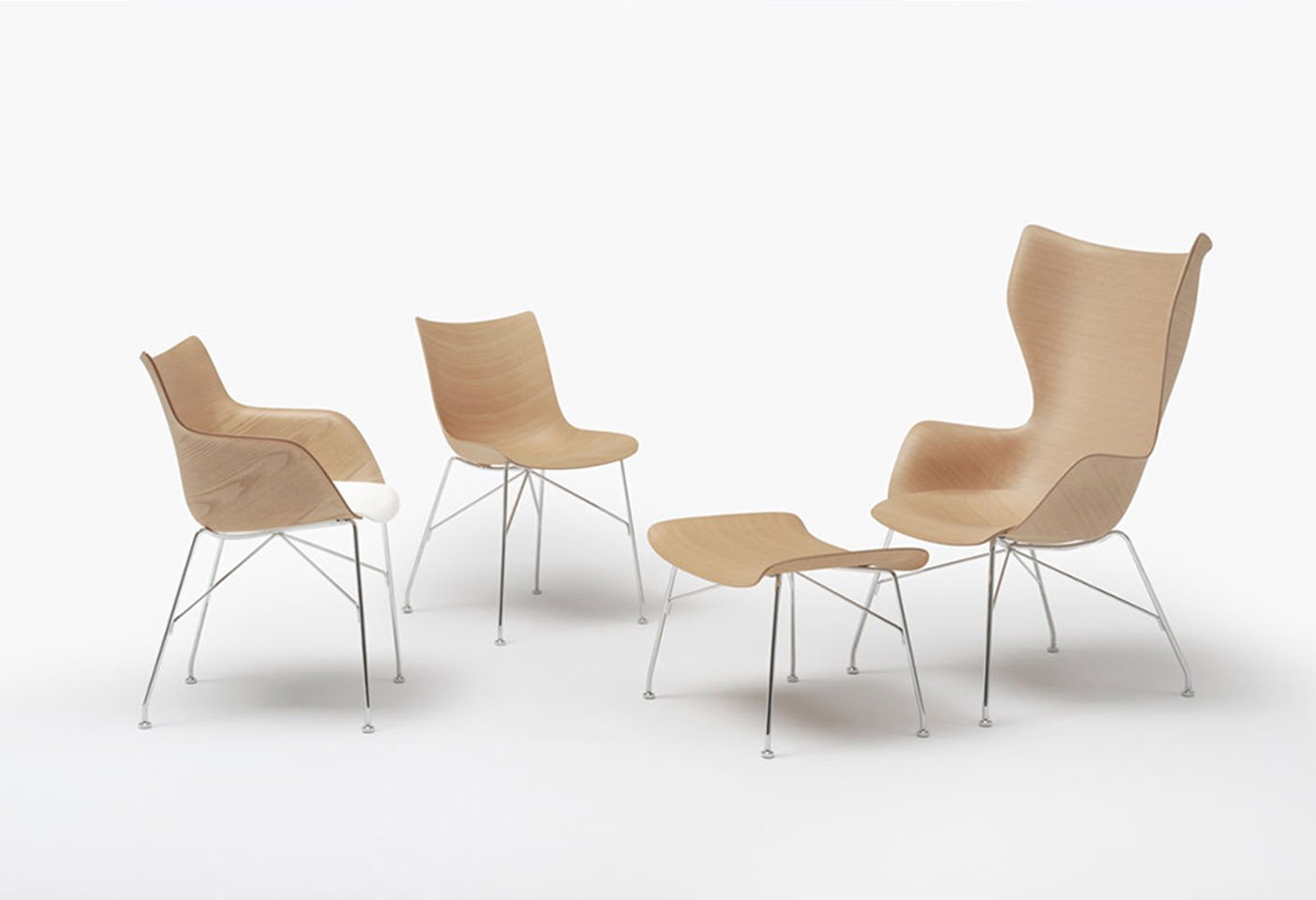
In 2022 the design industry is harnessing design circularity as a key step to reducing waste and, in turn, carbon emissions. From the Bio Componibili to the Smart Wood Collection and Camaleonda, Kartell and B&B Italia are redesigning classics using technological innovation and sustainable materials to develop collections that use the bare minimum of materials and energy.
Today, 95 percent of new designs presented by Kartell are made from ecologically friendly materials and 90 percent of their products can be taken apart and fully recycled. While B&B Italia relaunched the classic Camaleonda, first designed by Mario Bellini in 1970, redesigning it so that every element becomes a material asset that can be dismantled for another lifecycle.
In 2017 when Tim Brown at global design group IDEO announced that the future of design was circular, the nature of closed loop production and business models that avoided waste seemed like a far, far away projection. However fast forward 5 years and breaking free of the traditional linear economy is the modus operandi for leading furniture makers including Kartell and B&B Italia. In 2022 as the world continues to grapple with reducing its carbon footprint, the design industry is focusing on design circularity as one of the key steps for reduced waste and in turn carbon, along with a renewed focus on sustainable materials and design processes to transform their products.
The philosophy behind circular design looks at a product in its parts before it is put into production and then how each part can circulate back into a closed loop of reuse, repair, re-manufacture, refurbish, recycle or compost. The process is gaining moment as global importation tariffs challenge companies on products that emit greenhouse gases, and businesses that transact with the EU and the US are looking at sustainability from a financial impact. As Karie Soehardi remarks, ‘genuine reporting is key. It is inevitable that the migration from linear to circular will take time, but acting now and leading from the front will only be of benefit in the long term’.

The philosophy behind the Smart Wood Collection by Kartell is to use the least amount of wood possible and source all of the material from FSC-certified forests that allow the company to guarantee its provenance and contribute to the proper use of forest resources. Photo c/o Kartell.
Launching the ‘Kartell loves the planet’ manifesto in 2018, the Italian manufacturer published a corporate code covering 11 of the 17 Sustainable Development Goals (SDGs) established by the United Nations. A ‘blueprint to achieve a better and more sustainable future for all,’ Kartell identified the SDGs most closely linked to activities across its entire production and distribution chain, which include removing waste from the environment and turning it into raw material – SDG 9, Industry, Innovation and Infrastructure, SDG 12, Responsible Consumption and Production, SDG 13, Action to Combat Climate Change and its Impacts, and SDG 15, Life on Land. It’s an approach that involves end products as well as strategic, financial and creative decisions, and the management of relations and interactions with the supply chain, including design and communications.
“Promoting the beauty of objects and respect for humanity is also part of our mission,” remarks Claudio Luti, President of Kartell, who is one of the leading design groups focused on product durability and longevity and the role it plays as a fundamental aspect of sustainable development. In 2020 the brand’s range of new, renewable and recycled materials made up 40 percent of the group’s collection that included new green products – recycled, wood, bio, and polycarbonate 2.0. Design collections from the Smart Wood Collection by Philippe Starck, the Bio Componibili, and the next generation polycarbonates revisit one of the most distinctive features of Kartell’s collection – its iconic range of transparent pieces by Philippe Starck, Patricia Urquiola and Ferruccio Laviani.
Material matters
It was Kartell who first launched polycarbonate into the world of furniture back in 1999, and by 2002 Philippe Starck’s enigmatic Louis Ghost chair would recalibrate the material from industrial to high design, cementing Kartell’s reputation for style and innovation in the process. ‘Transparency is a distinctive feature of Kartell,’ remarked Luti at the launch of their newest innovation, Polycarbonate 2.0. ‘We are proud that our ongoing search has led to the creation of a new sustainable polycarbonate that derives in part from vegetable waste.’
Kartell's latest material development preserves the same level of transparency, thermal and mechanical resistance, robustness and strength as the original version, but is produced through synthesis obtained from industrial cellulose and paper waste to reduce carbon dioxide emissions by 60 percent compared to similar fossil-based products. The new material has been introduced into its most popular pieces, including the Louis Ghost chair, and will gradually replace parts currently made from conventional polycarbonates in a process underpinned by Kartell’s circular-economy ethos and focus on recycled and organic resources.

The Polycarbonite 2.0 is Kartell's latest material development with the same level of transparency, thermal and mechanical resistance, but reduces carbon dioxide emissions by 60 percent. Photo c/o Kartell.
‘One of the founding principles of our philosophy is to support design that is built on quality, function, beauty and importantly product longevity,. We believe that by working together, sharing knowledge, discussing insights, experiences and challenges, and supporting one another on this journey, we can develop a circular design solution that meets the needs of nature and the planet, one design step at a time’.
Leighton Clarke, Group CEO, Space Furniture and Poliform
Bio Componibili
For the iconic Componibili this meant that the ongoing research and innovation in industrial processes has enabled the design first released by Anna Castelli Ferrieri in 1967 to be produced in biopolymer made from renewable raw materials sourced from non-GMO agricultural waste outside the food chain. The product is now in the collection of the MOMA Design Store in New York and has obtained international TÜV Austria certification with the maximum star rating for a biodegradable product.
Smart Wood Collection
“I’ve spent my life trying to create objects that are as smart as possible, that use the bare minimum of material and energy, and that are ideally timeless,” remarks French designer Philippe Starck who is a key collaborator with Kartell and behind Kartell’s new collection of wood products. “Like Charles Eames before me, I saw plywood as the ideal solution to this problem, but plywood used to be flat and its design opportunities were far too limited. So it has been a long road, but progress in design and production has finally made it possible to create sculpted wood furniture and that’s how the Smart Wood collection began. It’s a project that has taken many years and one tiny step at a time. Smart Wood now is the right collection at the right moment and it has enabled me to satisfy my need for nature.”
The aim of the Smart Wood range is to use the least amount of wood possible and source all of the material from FSC-certified forests that allow the company to guarantee its provenance and contribute to the proper use of forest resources. Winner of a 2020 Red Dot Award, the Q/Wood upholstered armchair also features the innovative, environmentally friendly Aquaclean fabric which contains no PFC's and can be cleaned with water so no need for chemicals.
Last year 95 percent of new designs presented by Kartell at Milan Design Week were made from ecologically friendly materials and 90 percent of the products in the Kartell catalogue can now be taken apart and fully recycled, and by 2030 Kartell has stated that it will use green materials in the manufacture of every product in its collection.
Camaleonda
‘Certain products are born in the future, Camaleonda is one of them… It is its 50th anniversary and it stays alive because Camaleonda does not have a form that nails it in a frame of time, it still shows possibilities,’ remarked Mario Bellini at the relaunch of the Camaleonda in 2020, a piece he first designed for B&B Italia in 1970.
The iconic Cameleonda has been re-designed to allow every element to be dismantled and enable all materials to have another lifecycle so that each repurposed element becomes a material asset. Breaking down the elements of the sofa, the materials include a double blanket layer of 400g polyester fibre derived from PET bottles and synthetic fibres that is fully recycable. It is no longer stapled during the manufacturing process so the cover can be separated and recycled. Layered polyurethane of different densities makes the sofa compact, avoiding the need of frames, straps and adhesives, and the Cameleonda’s interlocking seat composition allows for a spring effect between the different layers. All timber is high quality 100% recycled wood (circular wood) from waste streams and sustainable forestry, while the spherical feet are made from FSC sourced natural beech.





